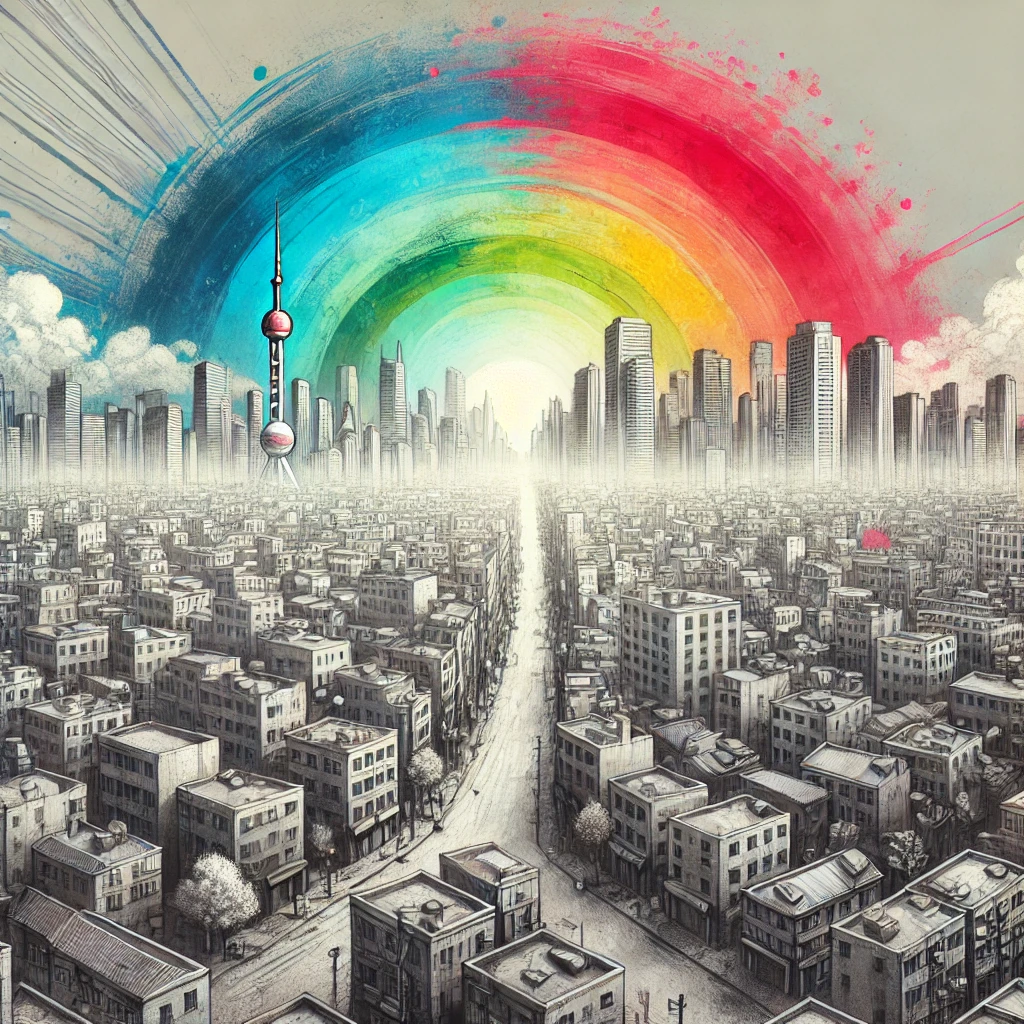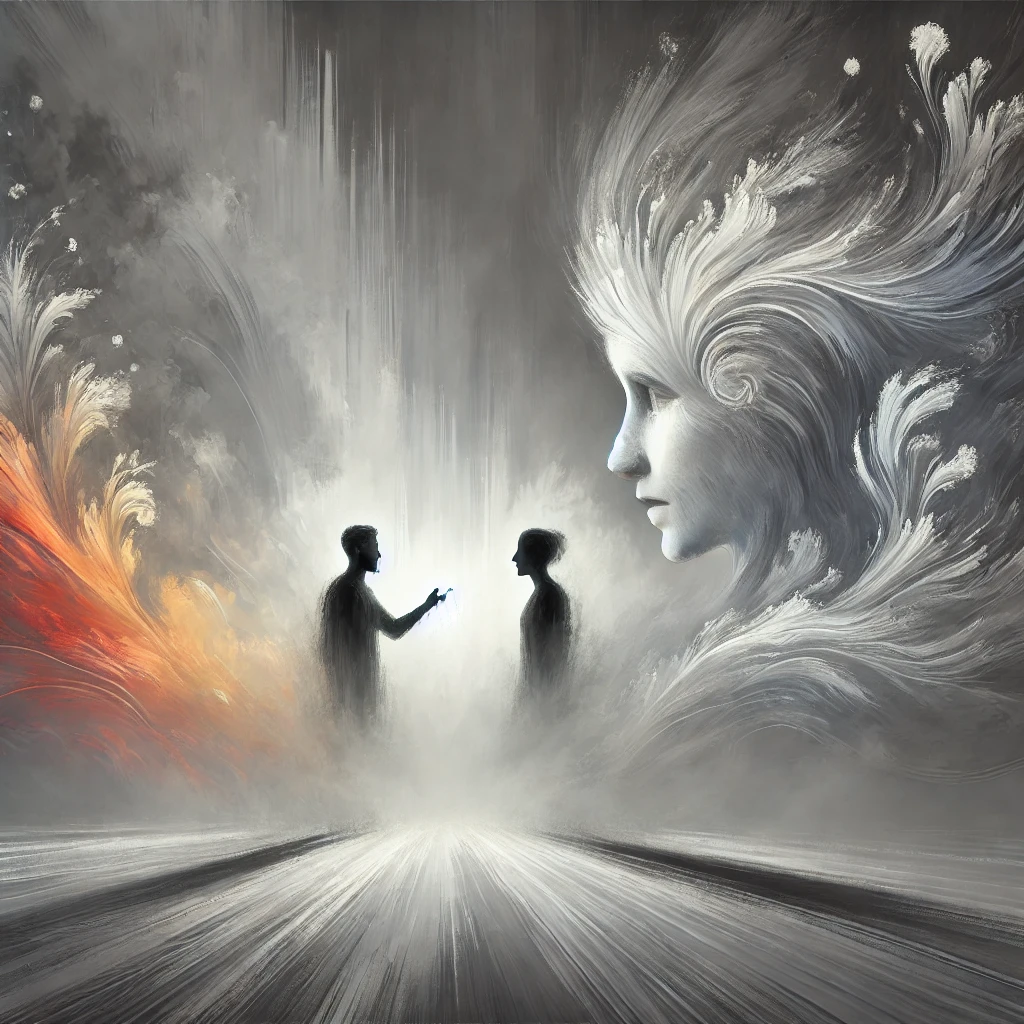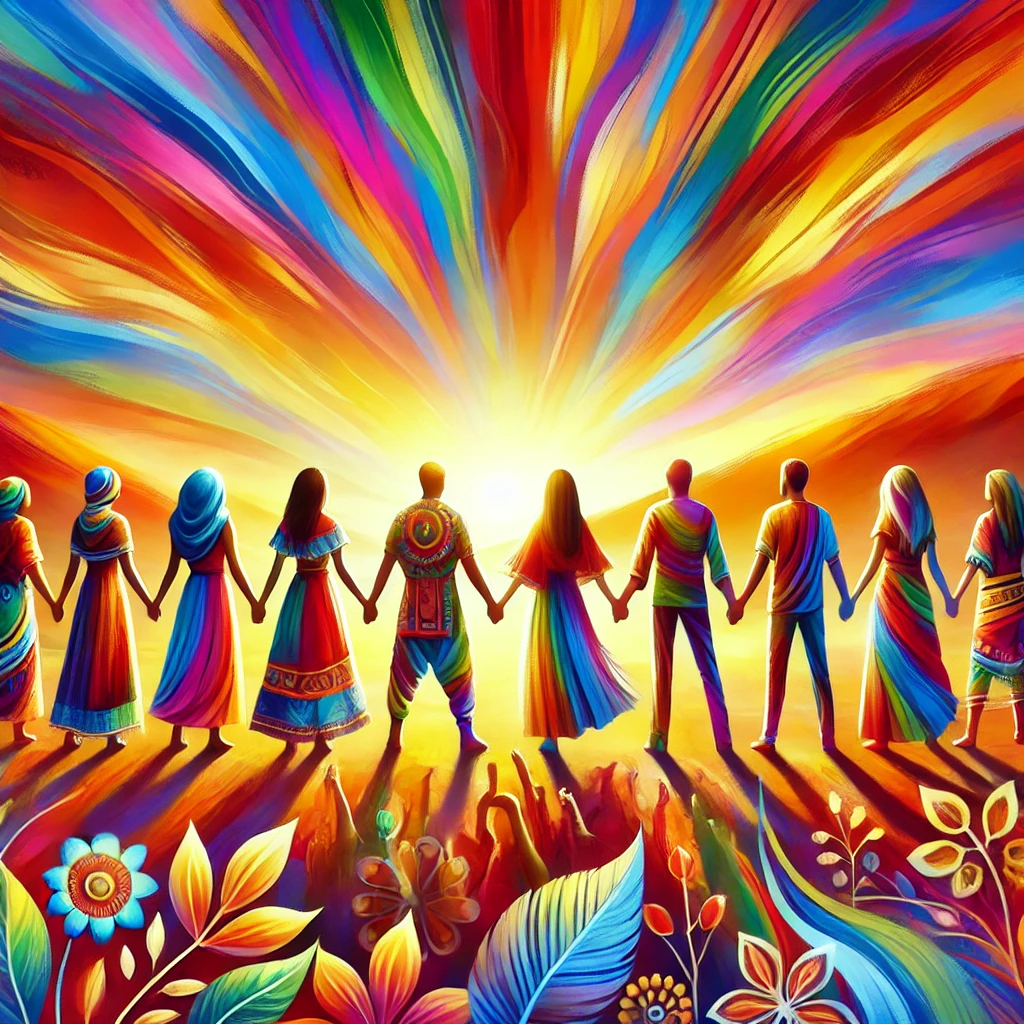From Despair to Unity
In a world once vibrant with color, an unforeseen event drained all hues, leaving everything in shades of gray. This sudden desaturation led to widespread confusion and despair, as people grappled with the loss of the familiar vibrancy that once defined their lives.

The world lost its color, leaving everything in shades of gray.
Visual created by the author.
The Psychological Impact of Color Loss
Colors have long been known to influence human emotions and behaviors. Warm colors like red, yellow, and orange can evoke feelings of love, passion, happiness, and anger, while cool colors such as blue, green, and purple are associated with calmness, sadness, and indifference. The absence of these colors disrupted daily life, affecting moods and interactions.

Art lost its allure, and life became monotonous in a colorless world.
Visual created by the author.
Research indicates that exposure to certain colors can impact cognitive performance and emotional states. For instance, viewing red prior to a challenging cognitive task has been shown to undermine performance, while exposure to blue can enhance creativity and calmness.
As days turned into weeks, the lack of color began to take a toll on mental well-being. Art lost its allure, fashion became monotonous, and nature's beauty was obscured. The uniformity of the environment led to a sense of monotony, causing many to feel disconnected and disheartened.
Studies have shown that sensory deprivation, including the absence of color, can lead to hallucinations and cognitive disturbances as the brain amplifies neural noise in search of missing visual signals.
A Shift in Perception
However, amidst this grayscale existence, a profound realization emerged. Without the distraction of color, individuals began to perceive each other without preconceived notions tied to skin tone or appearance. The absence of color forced society to confront the essence of humanity, leading to deeper connections based on character and shared experiences.

Amidst the grayscale, faint colors began to emerge through human connection.
Visual created by the author.
This phenomenon mirrors the concept of "colorblindness" in social interactions, where ignoring racial differences is intended to promote equality. However, research suggests that this approach can sometimes perpetuate existing racial inequities by failing to acknowledge and address systemic discrimination.
Communities started to unite, celebrating the diversity of thought, culture, and personality. The initial despair gave way to a newfound appreciation for intrinsic qualities over external appearances. People learned to value each other for who they were, not how they looked.
This shift reflects the limitations of the colorblind ideology, which, while well-intentioned, can inadvertently undermine cultural heritage and invalidate unique perspectives by denying negative racial experiences.
Embracing a Colorless Unity
Over time, as society adapted to this new reality, the mental health of the populace improved. The world, though devoid of color, became richer in empathy, understanding, and unity. The loss of color illuminated the path to a more inclusive and accepting society, where the true spectrum of humanity was celebrated.

A colorful future emerges as humanity embraces empathy and understanding.
Visual created by the author.
This narrative serves as an allegory, reflecting on how societal perceptions tied to color can influence human interactions. It underscores the potential for growth and unity when superficial differences are set aside in favor of genuine human connection.
Additional Insights
For further insights into the impact of color and its absence on society, you might find this article thought-provoking:
Debunking the Myth of Colorblindness in a Racist Society
Additionally, Dr. Camara Jones offers compelling allegories on race and racism in this TEDx talk:
Allegories on Race and Racism by Dr. Camara Jones
Final Thoughts
This post explores the journey of humanity through a colorless world—an allegory that challenges us to see beyond the superficial and embrace deeper, more meaningful connections.
If you lived in a colorless world, what would you miss most? How do you think color influences our emotions and daily lives? Share your thoughts in the comments!
If I were to live in a colorless world since day one in life, I wouldn't be able to know that colors exist. I would have been genuinely revelling in the beauty of my colorless dimension and would never miss anything from the spectrum of hues. Probably not for I am already in awe to the several tones of black and gray in my already sparkling world, pure in its tonality, subtle in its description, and still realistically complementing each other.
True to the world of colors which we are in, it's undeniably a shimmer to mirror the individual's energy and vibes towards the day and perhaps, to people as well. Usually, color influences us through our surroundings. As for me, the lighter it is the more favorable for me because indeed it will affect the mood and atmosphere to where I am presently in/at.
Let's just live with better colors!😇😍😄
Your comment is upvoted by @topcomment
More info - Support @topcomment - Discord
Good morning @topcomment. Thanks for the upvote that energizes me more as I get to witness another sparkling colors around me including the hues of black and white while spending this splitting moment with you😇😄
I wish you a great day ahead😊 #CreativeSparks
Have a great day!
And jeep on engaging!
Will do 😇
👍👍